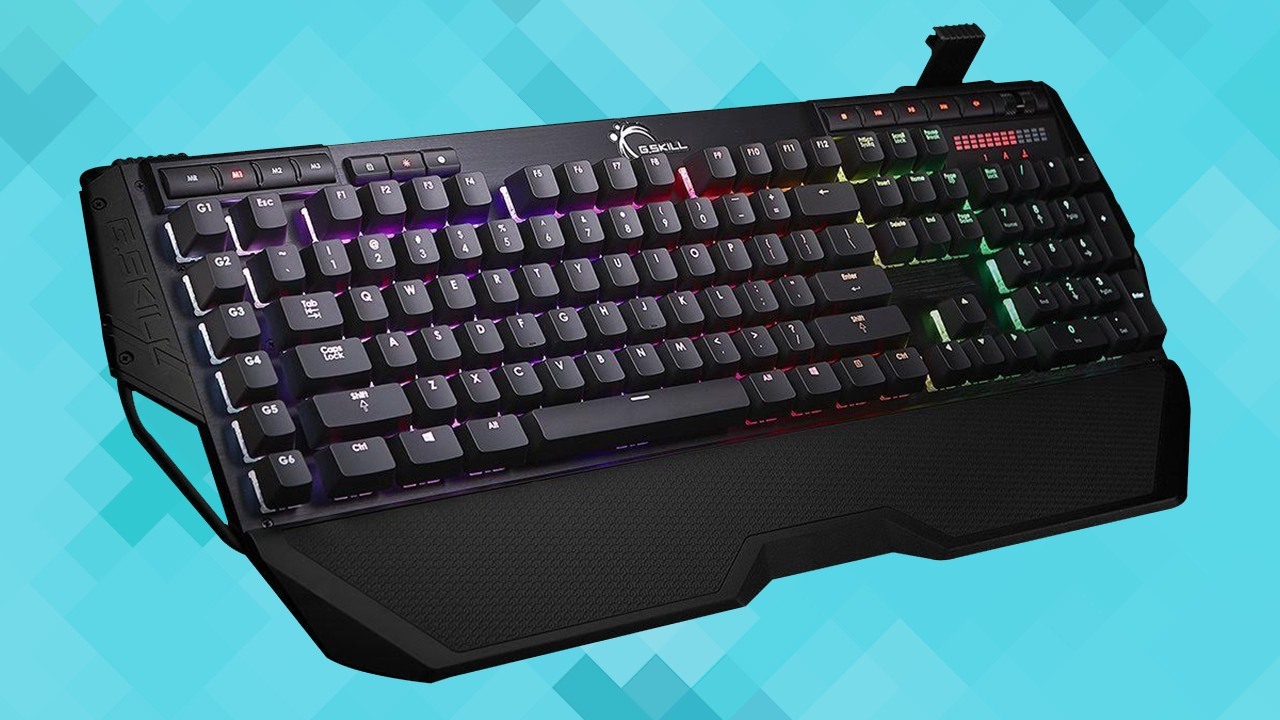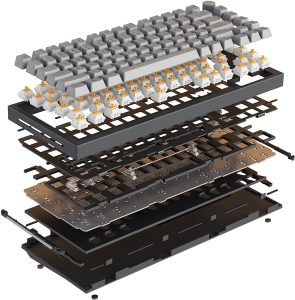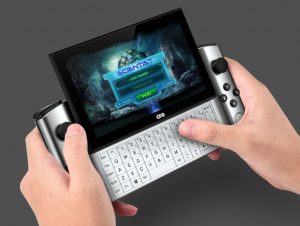Introduction
Welcome to the exciting world of gaming keyboards! As technology continues to evolve, the demand for high-performance gaming peripherals has reached new heights. In the realm of PC gaming, a keyboard is not merely a tool for input, but a crucial extension of the gamer's skill and precision. In 2017, the market is flooded with an array of gaming keyboards, each boasting unique features and capabilities. Choosing the right keyboard can significantly impact a gamer's experience, from comfort and responsiveness to customization and durability.
Gaming keyboards are designed to cater to the specific needs of gamers, offering enhanced responsiveness, tactile feedback, and advanced customization options. The quest for the perfect gaming keyboard involves navigating through a myriad of options, including mechanical vs. membrane keyboards, different key switches, backlighting, macro keys, durability, connectivity, and of course, price. Understanding these factors and their implications is essential for making an informed decision and investing in a keyboard that aligns with your gaming preferences and requirements.
In this comprehensive guide, we will delve into the key aspects of gaming keyboards to help you navigate the maze of options and make an informed choice. Whether you're a seasoned pro or a novice gamer, this guide aims to demystify the world of gaming keyboards, empowering you to make a confident decision that enhances your gaming performance and overall experience.
So, buckle up and get ready to explore the realm of gaming keyboards, where innovation meets precision, and customization meets performance. Let's embark on this journey to discover what makes a really good gaming keyboard in 2017.
Mechanical vs. Membrane Keyboards
When it comes to gaming keyboards, the choice between mechanical and membrane keyboards is a fundamental consideration that significantly impacts the overall gaming experience. Understanding the differences between these two types of keyboards is crucial for gamers seeking the perfect balance of tactile feedback, durability, and performance.
Mechanical Keyboards:
Renowned for their tactile precision and robust build, mechanical keyboards have gained immense popularity among gamers. These keyboards utilize individual mechanical switches for each key, providing a distinct tactile feedback and audible click with every keystroke. The key switches in mechanical keyboards are typically more responsive, offering a shorter actuation distance and enabling rapid, precise inputs, which is particularly advantageous in fast-paced gaming scenarios. Furthermore, the durability of mechanical switches ensures a longer lifespan, with some switches rated for tens of millions of keystrokes.
Membrane Keyboards:
In contrast, membrane keyboards feature a different key mechanism, utilizing a series of membrane layers to register key presses. While membrane keyboards are generally more affordable and quieter than their mechanical counterparts, they often lack the tactile feedback and key responsiveness that many gamers seek. The membrane design may lead to a mushy or spongy feel, which can hinder the speed and precision required in gaming. However, membrane keyboards are valued for their low profile and quieter operation, making them suitable for environments where noise reduction is a priority.
When choosing between mechanical and membrane keyboards, gamers must weigh the trade-offs between tactile feedback, key responsiveness, durability, and noise levels. While mechanical keyboards excel in providing a satisfying typing experience and enhanced gaming performance, membrane keyboards offer a more budget-friendly and discreet alternative. The decision ultimately hinges on individual preferences, gaming requirements, and the desired balance between tactile feedback and noise levels.
As we delve deeper into the realm of gaming keyboards, the choice between mechanical and membrane keyboards serves as a pivotal starting point, laying the foundation for a personalized and optimized gaming setup.
Key Switches: Cherry MX, Razer, and Others
Key switches are the heart and soul of a gaming keyboard, dictating the tactile feel, actuation force, and overall responsiveness of each key. Among the myriad of key switches available, Cherry MX and Razer switches stand out as popular choices, each offering unique characteristics that cater to diverse gaming preferences.
Cherry MX Switches:
Renowned for their exceptional build quality and diverse options, Cherry MX switches have solidified their position as a top choice among gamers. The Cherry MX lineup encompasses various switch types, including the tactile and clicky MX Blue, the linear and silent MX Red, the tactile and quiet MX Brown, and the tactile and audible MX Clear, among others. Each switch variant offers distinct feedback and actuation characteristics, allowing gamers to tailor their keyboard to suit their specific gaming and typing needs. The durability of Cherry MX switches, coupled with their consistent performance, has made them a staple in the gaming community, providing a reliable and customizable platform for gamers to elevate their gameplay.
Razer Switches:
Razer, a prominent name in the gaming industry, has developed its proprietary line of mechanical switches to complement its gaming keyboards. The Razer Green switch, designed for tactile and clicky feedback, mirrors the characteristics of the Cherry MX Blue switch, catering to gamers who crave audible and tactile key presses. Meanwhile, the Razer Orange switch offers a quieter and more discreet alternative, appealing to those seeking a tactile yet silent typing experience. Razer switches are engineered to withstand intense gaming sessions while delivering consistent performance and precision, contributing to an immersive gaming environment.
Other Key Switches:
Beyond Cherry MX and Razer switches, the gaming keyboard market features an array of alternative key switches, each with its own unique attributes. Key switch brands such as Kailh, SteelSeries, and Logitech have introduced their versions of mechanical switches, aiming to offer gamers a diverse range of options to suit their preferences. These switches vary in actuation force, tactile feedback, and noise levels, providing gamers with the flexibility to select a keyboard that aligns with their gaming style and ergonomic preferences.
As gamers navigate the landscape of key switches, the choice between Cherry MX, Razer, and other switch variants presents an opportunity to fine-tune the keyboard’s tactile feel and responsiveness, ultimately enhancing the gaming experience and empowering players to achieve peak performance.
Backlighting and Customization
One of the defining features of gaming keyboards is the incorporation of customizable backlighting, elevating both the aesthetic appeal and functionality of the device. Backlit keyboards not only enhance the visual allure of gaming setups but also offer practical benefits, such as improved visibility in low-light environments and the ability to customize lighting effects to suit individual preferences.
RGB Backlighting:
RGB backlighting has become a hallmark of modern gaming keyboards, allowing users to personalize their keyboard illumination with a spectrum of colors and dynamic lighting effects. This level of customization enables gamers to synchronize their keyboard lighting with in-game actions, create immersive ambient effects, and express their individuality through a vibrant and visually striking keyboard setup. Moreover, the integration of RGB backlighting enhances the overall gaming atmosphere, adding a layer of immersion and personalization to the gaming experience.
Customization Software:
Many gaming keyboards are accompanied by intuitive software that empowers users to fine-tune the backlighting and customize key assignments, macros, and profiles. This software grants gamers the freedom to create intricate lighting patterns, assign specific colors to individual keys, and synchronize lighting effects across compatible peripherals, fostering a cohesive and visually captivating gaming environment. Furthermore, the ability to create and save multiple profiles allows users to seamlessly switch between lighting configurations tailored to different games or activities, enhancing both convenience and personalization.
Practicality and Aesthetics:
Beyond the aesthetic appeal, backlighting serves a practical purpose by enhancing visibility during late-night gaming sessions and providing a visually engaging platform for streamers and content creators. The ability to highlight specific keys, such as WASD for movement or custom macro keys, contributes to improved accessibility and efficiency during gameplay. Additionally, the integration of backlighting in gaming keyboards accentuates the overall aesthetics of gaming setups, complementing the visual theme and adding a touch of flair to the gaming environment.
As gamers seek keyboards that align with their preferences, the inclusion of customizable backlighting and intuitive software empowers them to personalize their gaming experience, infusing creativity and functionality into their gaming setups. The fusion of practicality and aesthetics through customizable backlighting underscores the evolving landscape of gaming peripherals, catering to the diverse needs and artistic inclinations of the gaming community.
Macro Keys and Programmable Buttons
Gaming keyboards often feature dedicated macro keys and programmable buttons, offering gamers a powerful tool for streamlining complex commands, executing intricate maneuvers, and enhancing overall gameplay efficiency. These customizable inputs provide a competitive edge by enabling players to automate repetitive actions, unleash rapid-fire combos, and execute elaborate sequences with a single keystroke, thereby optimizing performance and responsiveness.
Macro Functionality:
Macro keys, also known as G-keys, are additional programmable keys integrated into gaming keyboards, allowing users to assign custom macros or commands to each key. These macros can encompass a series of keystrokes, mouse clicks, and even specific timing intervals, enabling gamers to execute complex actions with precision and consistency. Whether it’s executing a complex spell rotation in a role-playing game or triggering intricate build commands in a real-time strategy title, macro keys empower players to streamline their gameplay and gain a competitive advantage.
Customization and Flexibility:
Programmable buttons extend beyond dedicated macro keys, as many gaming keyboards offer the flexibility to reassign functions to standard keys, enabling users to create custom shortcuts and macros tailored to their gaming preferences. This level of customization allows players to adapt their keyboard layout to suit specific game genres, optimize workflow in professional applications, and unleash the full potential of their gaming peripherals. The ability to assign macros on-the-fly, create multiple profiles, and seamlessly switch between configurations enhances adaptability and responsiveness, catering to diverse gaming scenarios and playstyles.
Enhanced Productivity:
Beyond gaming applications, programmable buttons contribute to enhanced productivity by facilitating quick access to frequently used commands and shortcuts in everyday computing tasks. Whether it’s launching applications, navigating multimedia controls, or executing complex software functions, the versatility of programmable buttons transcends gaming, offering a seamless and efficient interface for a wide range of activities.
As gamers embrace the multifaceted capabilities of macro keys and programmable buttons, the integration of these features in gaming keyboards underscores the convergence of performance and customization, empowering users to unleash their full potential and elevate their gaming experience to new heights.
Durability and Build Quality
When investing in a gaming keyboard, durability and build quality are paramount considerations that directly impact the longevity and performance of the device. Gamers rely on keyboards that can withstand intense usage, deliver consistent responsiveness, and endure the rigors of competitive gaming environments, making durability a crucial factor in the decision-making process.
Mechanical Durability:
Mechanical keyboards, revered for their robust construction, are engineered to endure extensive use and maintain consistent performance over time. The key switches in mechanical keyboards, particularly those utilizing renowned switches such as Cherry MX or Razer, are designed to withstand millions of keystrokes, ensuring long-term reliability and tactile consistency. The robust keycap construction and sturdy frame of mechanical keyboards contribute to their durability, making them resilient against the demanding requirements of gaming and daily use.
Build Quality:
High-quality gaming keyboards are constructed with a focus on durability, featuring reinforced frames, premium materials, and attention to detail in the manufacturing process. The structural integrity of the keyboard, including the keycaps, chassis, and cable, plays a pivotal role in ensuring long-term resilience and performance. Furthermore, the inclusion of features such as braided cables, gold-plated connectors, and spill-resistant designs enhances the overall durability and reliability of gaming keyboards, safeguarding them against potential wear and environmental hazards.
Consistency and Performance:
Durable keyboards not only withstand physical wear but also maintain consistent performance and responsiveness throughout their lifespan. The absence of key wobble, keycap fading, and switch degradation ensures that the keyboard delivers the same level of precision and tactile feedback over time, preserving the immersive gaming experience and empowering players to rely on their peripherals in critical gaming moments.
As gamers seek keyboards that embody durability and build quality, the emphasis on robust construction, resilient components, and long-term performance underscores the commitment to delivering a reliable and enduring platform for gaming enthusiasts. The fusion of durability and build quality represents a cornerstone of the gaming keyboard landscape, catering to the demands of competitive gaming and the expectations of discerning users.
Connectivity and Compatibility
As the gaming ecosystem continues to evolve, the connectivity and compatibility of gaming keyboards play a pivotal role in ensuring seamless integration with a diverse range of gaming setups and devices. Gamers seek keyboards that offer versatile connectivity options, compatibility with various platforms, and the ability to synchronize with complementary peripherals, fostering a cohesive and interconnected gaming environment.
Wired and Wireless Connectivity:
Gaming keyboards are available in both wired and wireless configurations, each offering distinct advantages to cater to different user preferences. Wired keyboards provide a reliable and low-latency connection, ensuring instantaneous input responsiveness and eliminating concerns about battery life. On the other hand, wireless keyboards offer the freedom of movement and a clutter-free gaming setup, leveraging advanced wireless technologies to deliver stable and lag-free performance, making them an appealing choice for gamers seeking enhanced mobility and flexibility.
Platform Compatibility:
With the gaming landscape encompassing a multitude of platforms, including PC, consoles, and mobile devices, the compatibility of gaming keyboards with diverse platforms is crucial. Keyboards that support multi-platform compatibility, including Windows, macOS, and select gaming consoles, ensure that gamers can seamlessly transition between different gaming environments without sacrificing performance or functionality. Furthermore, the integration of dedicated software and drivers tailored to specific platforms enhances the adaptability and versatility of gaming keyboards, catering to the diverse needs of gamers across different ecosystems.
Peripheral Synchronization:
Many gaming keyboards offer synchronization capabilities with complementary peripherals, such as gaming mice, headsets, and RGB lighting systems, enabling users to create a unified and harmonized gaming setup. The ability to synchronize lighting effects, macros, and profiles across compatible peripherals fosters a cohesive and immersive gaming environment, elevating the visual appeal and functionality of the entire gaming ecosystem.
As gamers seek keyboards that embody seamless connectivity and broad compatibility, the emphasis on versatile connectivity options, multi-platform support, and peripheral synchronization underscores the commitment to delivering a cohesive and integrated gaming experience, transcending the confines of individual devices and platforms.
Price and Value for Money
When navigating the realm of gaming keyboards, the consideration of price and the associated value proposition is a crucial aspect that influences the purchasing decision. Gamers seek keyboards that strike a balance between affordability and the features that align with their gaming requirements, ultimately delivering a compelling and worthwhile investment.
Entry-Level Options:
Entry-level gaming keyboards cater to budget-conscious gamers, offering essential gaming features such as customizable backlighting, tactile switches, and macro functionality at an accessible price point. While these keyboards may lack certain premium features and materials, they provide a gateway for gamers to experience the benefits of gaming-centric peripherals without a substantial financial commitment, making them an attractive option for beginners and casual gamers.
Mid-Range Offerings:
Mid-range gaming keyboards expand upon the foundational features, incorporating premium materials, advanced customization options, and enhanced build quality while remaining within a reasonable price range. These keyboards often boast durable construction, versatile connectivity, and sophisticated software integration, delivering a compelling blend of performance and value. The mid-range segment appeals to gamers seeking a well-rounded gaming keyboard that offers a comprehensive suite of features without venturing into the high-end price bracket.
High-End Solutions:
High-end gaming keyboards represent the pinnacle of performance and customization, featuring premium key switches, advanced lighting effects, robust build quality, and intricate macro functionality. While commanding a higher price, these keyboards cater to enthusiasts and professional gamers who demand uncompromising performance, durability, and customization options. The investment in a high-end gaming keyboard often translates into a superior and tailored gaming experience, offering a wealth of features and capabilities that align with the demands of competitive gaming and enthusiast-level usage.
Value Assessment:
Assessing the value for money of a gaming keyboard involves evaluating its feature set, build quality, durability, and the alignment of these attributes with the user’s gaming preferences and requirements. A keyboard that delivers a comprehensive suite of features, enduring performance, and seamless integration at a competitive price point represents a compelling value proposition, empowering gamers to make an informed choice that maximizes their gaming experience within their budgetary constraints.
As gamers navigate the diverse price points and value propositions offered by gaming keyboards, the pursuit of an optimal balance between price, features, and performance underscores the quest for a compelling and worthwhile investment, ensuring that the chosen keyboard resonates with the user’s gaming aspirations and delivers a gratifying and enduring gaming experience.
Conclusion
As we conclude our exploration of gaming keyboards in 2017, it becomes evident that the landscape of gaming peripherals has evolved to encompass a diverse array of features, catering to the unique preferences and demands of gamers across the spectrum. From the fundamental choice between mechanical and membrane keyboards to the intricacies of key switches, backlighting, macro functionality, and connectivity, gaming keyboards have transcended their traditional role as input devices, emerging as indispensable tools for enhancing the gaming experience.
The enduring debate between mechanical and membrane keyboards reflects the nuanced preferences of gamers, with each type offering distinct advantages in tactile feedback, responsiveness, and durability. The proliferation of key switch variants, including the renowned Cherry MX and Razer switches, underscores the emphasis on tailored customization and tactile precision, providing gamers with a wealth of options to fine-tune their keyboard to their exacting standards.
Customizable backlighting, supported by intuitive software, has not only elevated the visual allure of gaming keyboards but has also enhanced practicality, enabling users to synchronize lighting effects, create immersive ambient experiences, and streamline key visibility during intense gaming sessions. The integration of macro keys and programmable buttons has empowered gamers to optimize their gameplay efficiency, automate complex commands, and unlock a new level of performance, underscoring the pivotal role of customization and adaptability in gaming keyboards.
Furthermore, the emphasis on durability, build quality, connectivity, and value for money echoes the commitment to delivering resilient, versatile, and cost-effective solutions that resonate with the diverse needs and aspirations of gamers. The convergence of these factors has redefined gaming keyboards as indispensable assets, fostering a cohesive and immersive gaming environment that transcends individual devices and platforms.
As gamers continue to seek the perfect gaming keyboard, the quest for a harmonious blend of performance, customization, and value remains at the forefront, driving innovation and evolution in the realm of gaming peripherals. The journey to discover the ideal gaming keyboard is a testament to the unyielding pursuit of precision, responsiveness, and personalization, underscoring the enduring significance of gaming keyboards as indispensable companions in the pursuit of gaming excellence.











![20 Best Single Player PC Games of All Time [2022]](https://robots.net/wp-content/uploads/2020/04/PC-Games-300x200.png)













